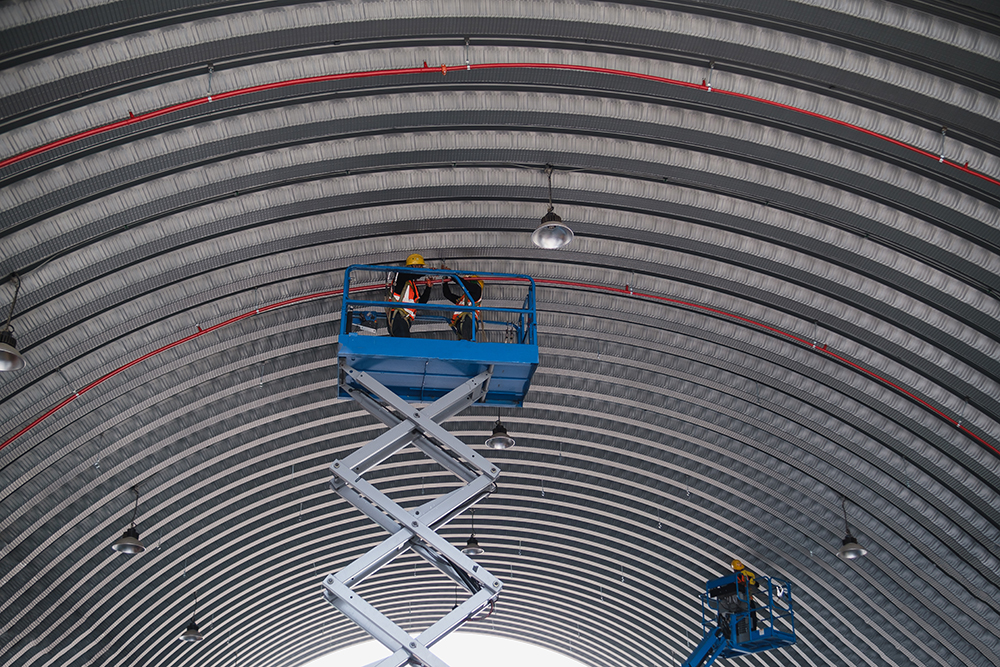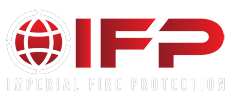When it comes to Fire Sprinkler Installation, there are many companies to choose from. But what sets Imperial Fire Protection apart from the rest is our commitment to excellence. Our highly trained experts will make sure your fire sprinkler system is installed correctly, which can save lives and drastically reduce property damage should a fire occur.
Our high attention to detail and diligence during the installation process ensures your fire sprinkler system will operate exactly as it was designed, which means automatic fire extinguishing capabilities in your building the moment it is needed. With years of installation experience, our team has installed fire sprinkler systems of all sizes. As a result, no job is too big or small for Imperial Fire Protection, from warehouses, large-scale office buildings to factories or single-family homes.

Why IFP Installations?
- We meet and exceed your specific industry installation requirements
- Safety is our top priority
- Thorough and fast fire sprinkler system installation
- Serving the DFW Metroplex and beyond
- Dry pipe sprinkler system, wet systems, and standpipes
- Licensed and insured Texas-based company
Are you ready to take the next step?
Schedule a consultation today.
Fire Sprinkler Installation Standards
The National Fire Protection Association’s NFPA 13, is the industry standard on all matters related to sprinkler systems within the United States. Sprinkler systems should be designed and installed to comply with the criteria outlined in the NFPA 13 and are tightly regulated. The first version of the NFPA 13 was initially published in 1896. Today, the over 600-page document has been updated numerous times and continues to provide quality control and compliance in installing fire sprinkler systems.
General NFPA 13 Definitions and Requirements
The NFPA 13 has an entire chapter dedicated to key terms and their definitions. The most important of these terms is its definition of an automatic sprinkler. An automatic sprinkler is described as: “a fire suppression or control device that operates automatically when its heat-activated element is heated to its thermal rating or above, allowing water to discharge over a specified area.”
One of the main requirements in the NFPA 13 is the mandate related to buildings that have sprinklers. It states that if a building has sprinklers, the entire building must be covered unless a specific area is explicitly exempted in the standards. Another significant portion of NFPA 13 documentation classifies occupancy standards by hazard level.
Hazard Levels for Determining Occupancy Ratings
Light Hazard
Light hazard buildings feature contents with low combustibility and would be expected to have low heat release from a fire. Therefore, light hazard buildings fall into a single group.
Ordinary Hazard
There are two groups of Ordinary hazard buildings:
- Group 1 buildings display low overall combustibility but encompass a moderate amount of combustible materials. However, no stockpile can be taller than 8 feet, and the building would be expected to have low heat release from a fire.
- Group 2 buildings display a moderate to high level of both combustibility and content. However, contents expected to release moderate heat should not be stacked taller than 12 feet, while stockpiles of contents with a high heat release should not exceed a height of 8 feet.
Extra Hazard
There are two groups of Extra hazard buildings:
- Group 1 buildings display very high combustibility and content amounts, plus added risks from compounds such as dust or lint, which can accelerate a fire. The rate of heat release from a fire would be high, but there are either no combustible and flammable liquids or only a minimal amount present.
- Group 2 buildings display very high combustibility, compounded by storage of moderate to large amounts of flammable or combustible liquids, even if there is ample shielding of combustibles.
Materials stored, known as “commodities,” are also assigned levels by NFPA 13: Class I is considered least vulnerable to fire, and Class IV is the most susceptible, with determinations made based on the materials being stockpiled and methods of stacking and storing.
Fire Sprinkler System Components and Installation
NFPA 13 provides specific descriptions of all components used in automatic sprinkler systems, including detailed requirements for their correct installation and a listing of all mechanical support requirements.
Piping may be wet, dry, permanently filled with water, or temporarily filled with gas. Pipes may be triggered to fill with water by an alarm signal with individual heads activated individually, or all sprinkler heads may activate simultaneously in a “deluge.”
Multi-cycle activation may be integrated, and sprinkler piping may be connected to circulating, closed-loop systems used for heating or cooling. Antifreeze may also be combined with water in part of the system, and the piping may be accessed separately or in tandem with the building’s main water piping.
Installation requirements are rigorous and require assistance from licensed professionals. Incorrect installation can lead to system failure and/or penalties, including fines from state and municipal authorities. Once installed, building automation systems can help monitor for any issues.
Are you ready to take the next step?
Schedule a consultation today.
Learn More About Fire Sprinkler Installation
How much does it cost to install a residential fire sprinkler system?
The cost of fire sprinkler systems cannot begin to be compared to the value of saving lives and your property. Still, we understand that the price of a fire sprinkler system is an important thing to consider when choosing a fire protection company. In general, the cost varies based on the size and type of fire sprinklers you install. Here are some average prices you can expect:
- $1 to $2 per sprinklered square foot for new construction projects
- $2 to $7 per sprinklered square foot for retrofitting existing homes and businesses
- Up to $10 per sprinklered square foot for retrofitting historic homes
There are other essential factors to consider that impact cost. For example, the type of pipe material you use can significantly change the overall cost. The most affordable type is plastic, and you should use it whenever possible to help keep costs down. However, in certain situations, you may need copper piping which is more expensive and will increase the installation cost.
The system features of your fire sprinkler system can also add to the overall installation cost. Systems that require a backflow preventer, a water storage tank, or a booster pump will cost more to install. Systems that use standalone pipes with a dedicated water supply often increase installation prices in new construction projects. When factoring in the added costs for certain types of fire sprinkler systems, it is important to note that many insurance companies offer premium discounts for buildings with automatic fire sprinklers.
A fire sprinkler system is a long-term investment, and the benefits greatly outweigh the costs. The amount of damage prevented by a fire sprinkler system is far more significant than the cost of having a fire sprinkler system installed. In addition, they give you peace of mind knowing your property is protected from fire 24/7, even when no one is there.
Civilian deaths have been drastically reduced when fire sprinkler systems are installed. Taking all of these factors into account, you can see that installing a fire sprinkler system is definitely worth the cost.
How long does it take to install a sprinkler system?
Fire sprinkler systems are like plumbing, electricity, or any other operational system in your building. Therefore, the time to install will vary greatly depending on the size and complexity of your home or building. With that being said, at Imperial Fire Protection, we pride ourselves on our ability to meet tight timeframes while exceeding your expectations for safe, thorough, and fast fire prevention system installation.
Is it easy to install a sprinkler system?
The short answer is installing a fire sprinkler system is not an easy task. You can install a fire sprinkler system without the help of a professional, but it is not recommended. Instead, you’ll need to check with your municipal office to see if a building permit is required to do so, and in some cases, you’ll need to recruit the help of a certified plumber or tradesperson to do the work properly.
The American Fire Sprinkler Association strongly discourages anyone from installing a fire sprinkler system without proper training. Sprinkler systems should always be installed according to guidelines laid out by the National Fire Protection Association.
What are fire sprinkler installers called?
A sprinkler fitter is a person responsible for installing, inspecting, and repairing sprinkler systems. Sprinkler fitters typically install plumbing fixtures, fix and replace defective and outdated sprinklers, and solder and weld pipes, tubes, and fittings designed for sprinklers. They also test sprinkler systems to ensure that they are well functioning as they wear and tear over time.
Are you ready to take the next step?
Schedule a consultation today.
